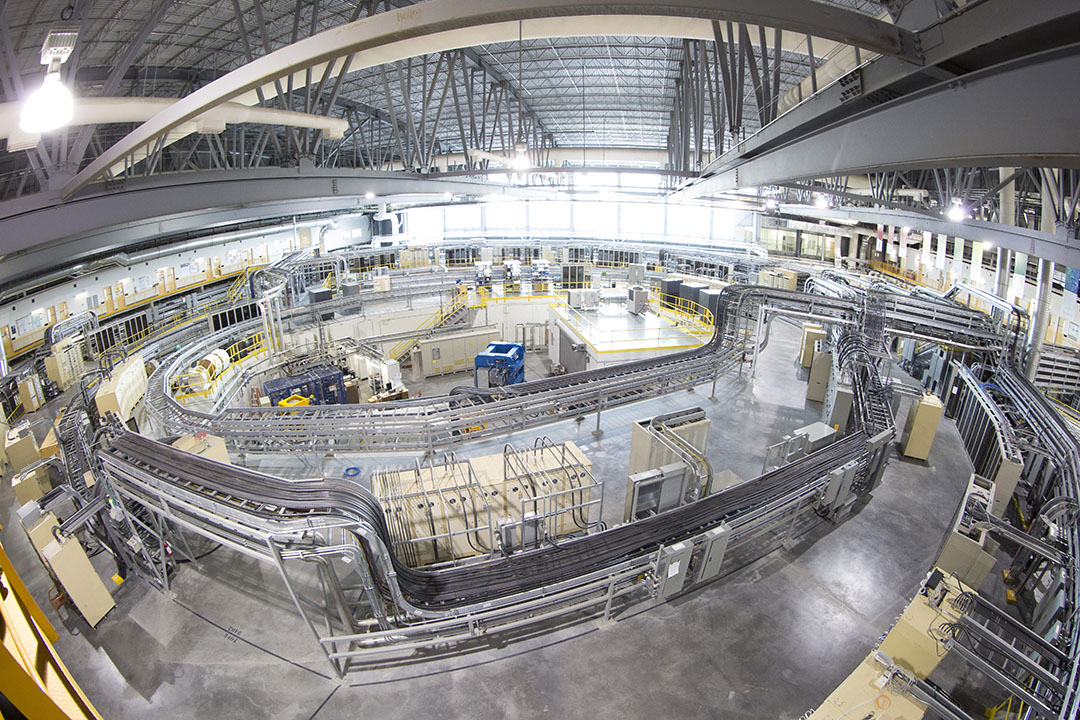
Uniquely USask: The CLS synchrotron
In the 20 years since its launch, the Canadian Light Source (CLS) synchrotron at the University of Saskatchewan (USask) has earned a well-deserved reputation for discovery and innovation by shining a light on possible solutions to many of the world’s great scientific questions.
By Colleen MacPhersonIn the 20 years since its launch, the Canadian Light Source (CLS) synchrotron at the University of Saskatchewan (USask) has earned a well-deserved reputation for discovery and innovation by shining a light on possible solutions to many of the world’s great scientific questions.
Whether it’s the quest for a cure for malaria or for a better battery, the unique synchrotron light capabilities at the CLS have been key to advances that positively affect the world and people who live in it, said Chief Executive Officer Dr. Robert Lamb (PhD).
“To mark the recent 20th anniversary of our ground-breaking, we celebrated those advances and acknowledged the scientists who have helped us become a global leader in synchrotron science,” he said.
The result of unprecedented co-operation among various levels of government, universities and industry partners across the country, the CLS is Canada’s largest science project. Construction of the facility on the USask campus began in 1999 and the official opening took place Oct. 22, 2004.
As Canada’s only synchrotron, it offers access for researchers from across the country to conduct experiments they would otherwise have to travel far afield to conduct. But it is not a Canadian-only facility; more than 4,000 scientists and students from 37 countries have used the CLS for experiments in disciplines in physics, chemistry, biology, animal and human health, agriculture, engineering, archaeology, geology and paleontology, resulting in more than 5,000 scientific publications and 67,000 citations to date.
As Lamb articulated, each discovery from the thousands of experiments run at the CLS since the start of beamline operations creates a stepping stone toward an ultimate goal.
“If you’re looking for a new drug, or a more nutritious grain variety or a better way to treat mine tailings, the work begins at the molecular level, which is where we operate,” he said. “Nothing can advance without a base of knowledge, an understanding of the actions and interactions of every compound, material and tissue that is part of the solution. Nothing provides that insight like synchrotron light.”
Over its 20-year history, the CLS has built expertise in a number of research areas including health, the environment, advanced materials and, most recently, agriculture. For Lamb, making soil and plant science, food processing and animal feed a strategic priority reflects a connection to the facility’s location “on the campus of a renowned agriculture university and in the middle of this country’s finest crop-producing region.”
In all research sectors, Lamb said the role of the CLS is to listen to users and respond with beamline and technique upgrades the help scientists answer questions. “And,” he added, “the possibilities are endless.”

